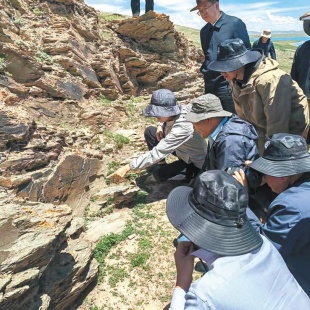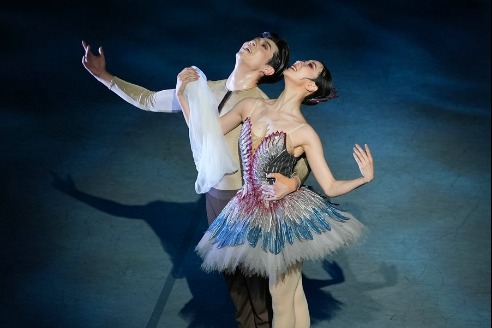Ancient carving linked to first emperor
Carving:?Chiseling methods offer clues


For the analysis, the administration organized expert panels involving archaeologists, historians, cultural relic conservators and calligraphy researchers, as well as experts in other fields, to conduct two rounds of field research and evaluation of the area surrounding the site.
Li Li, deputy director of the China Academy of Cultural Heritage, added that mineralogical composition studies and metallic element analysis conclusively ruled out the possibility of fabrication involving contemporary alloys or modern carving implements.
"The mineral types and contents inside the carved grooves and on the surface of the carved stone are basically consistent," she said.
"This indicates that both the interior of the grooves and the rock surrounding the inscriptions have undergone long-term weathering."
Li Ling, a veteran archaeologist and paleographer at Peking University who conducted detailed, comparative studies of the rock carving in Madoi and other confirmed Qin inscriptions, said, "Most expert panel members agreed with the conclusion that these characters are of the Qin era, though this writing in the wilderness has some variation compared with those already documented."
Different chiseling methods were used on the carving, showing that its creator or creators did not deliberately pursue a uniform format and were more casual in dealing with different conditions of the rock base.
Dating evidence also emerged from the special style of the characters.
For example, the character lun from Kunlun has a rare pattern that was known to exist only during the Qin Dynasty. This pattern is identical to one that appeared in a Qin documentation written on bamboo slip, an ancient writing material, that was unearthed in Hunan province in 2002, Li Ling said.
Recent evaluations have also clarified some of Tong's initial interpretations. Tong once deciphered two unclear characters as "twenty-six", indicating that the medicine-picking was done in "the 26th year of Qinshihuang's reign (including his rule as a vassal state king before he united China to become emperor)", or 221 BC. However, the expert panel finally concluded that it was "thirty-seven", or 210 BC, the year Qinshihuang died.
"More questions still remain to be answered," said Li Ling.
Wang Jinxian, director of the Qinghai Provincial Institute of Cultural Relics and Archaeology, said that comprehensive archaeological research has also been conducted across a vast tract of land surrounding the rock carving. Within a 150-kilometer radius, 75 unmovable cultural relics from throughout ancient history were discovered.
"Archaeological research showed that this lakeside region had been an area of frequent human activities dating back to the Paleolithic period," he said, responding to some public doubt about why Qinshihuang's mission left carvings on this "desolate land".
Realizing its key value in historical, artistic and scientific studies, the local government immediately launched a comprehensive protection program for the rock carving. Protection and monitoring facilities were set up, and nearby traffic routes were adjusted accordingly.
Deng vowed that the site will also be given special attention during the ongoing process of applying for the site's inclusion on China's ninth list of national key protected cultural heritage sites.





































